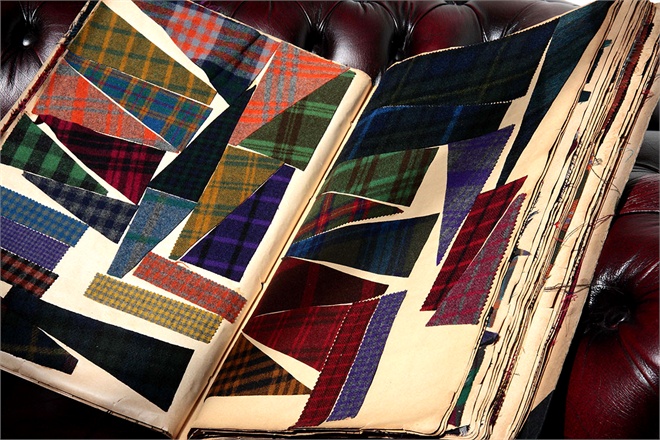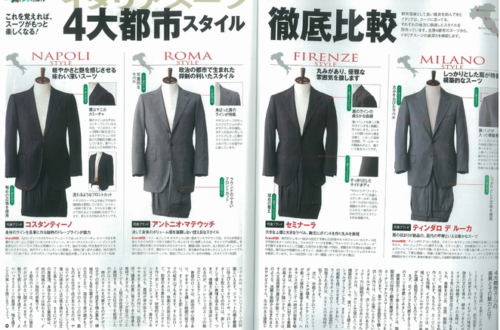When I hang out with my guy friends, the first thing I always — always — observe in a guy is the shoes, followed by the watch and belt. If they have a formal wear on, the white shirt, the suit, the way their trousers drape around their ankles, socks (it matters!), cufflinks (if any) and the choice of adornment (pocket squares, ties, bows etc).
Yes, I am that anal despite growing up in a country that does not have a strong suit culture. It did not help that I lived in Milan for almost six months, and have a strong interest towards menswear, particularly the suit.
When it comes to the suit, the mill plays an important role. Speaking of mills, many would recognize the name Vitale Barberis Canonico.
1. The history of Vitale Barberis Canonico (VBC)
Founded in 1663 at northern Biella — a small town in the northern region of Piedmont (Alba truffles!!!) VBC is one of the oldest mills in the world.
It’s very much a family business (13th generation, oh my lord) and has a rather interesting history. They were once military suppliers for the royal troops, had exported fabrics to China, survived the Great Depression, and as of today, they are some of the few mills that remain independent from the grasp of fashion conglomerates.
2. How is VBC different from the rest of the mills?
Now, for those who are well acquainted with English mills, Italian mills are quite different: Italian mills are often vertically integrated. Most Italian mills have their own sheep, process the raw wool into the final product, do their own finishing and even function as merchants by selling their own cloth. Put simply, the mill weaves and finishes, and merchants sell the finish product. Some mills, like Loro Piana, even tailor their own suits.

In the case of VBC, it is vertically integrated until the selling process. VBC sells some of its cloth directly to large companies, others via Drapers — its sister company —, and some through other merchants.
3. Who buys from VBC?
VBC’s largest customer is Zegna. Are you surprised?

But that’s only part of it.
Since VBC has a wide offering — from mid to high quality cloth — they supply to almost everyone. If you are a guy and own a suit, you may have VBC sitting in your wardrobe. 🙂 This makes VBC one large mill: 8 million meters of fabric each year!
4. The makings of a fabric
How does sheep become cloth?

It starts by harvesting the raw wool, which is done every 18 months or so. Apparently, VBC sources their wool from rural New South Wales — a large Australia state that also houses the famous Sydney Opera House.

Then, the raw material is weighed and graded. Grading is important because it determines the quality of the final product.
Next, the raw wool undergoes several processes known as scouring to remove impurities. At this point, lanolin may or may not be completely removed: lanolin gives wool a water resistance quality. Carding, which involves running wool through rollers with metal teeth, is then done to remove more dirt.

To separate short from long fibres, the wool is combed. Dyeing may or may not take place at this stage. The wool goes through the spinning process to form worsted cloth, which later goes through weaving to form a sheet of fabric.

The fabric is then cleaned again (this is known as fulling). At this point, the fabric will feel rough so finishing must be done. The more intensive the finishing is, the softer the fabric. If more pressure is applied onto the fabric during the finishing process, the thread lines on the fabric will disappear to create a blind effect, thus giving the desired sheen. Of course, writing it makes it sound simple, but it is in fact, not.

Finally, the fabric is inspected and then sold. 🙂 Do note that, prior to all this, there is a lot of design work involved. VBC has six designers to design the fabric.
5. Super what?
If you have purchased fabric for suit before, you would know your Supers. If you have not, fear not, Michelle is here to take you to demystify the Super!
Like bed sheets, thread count matters when it comes to suit making (this is heavily debated but I am not going to go in depth here). The rule of thumb: the higher the number, the narrower the fibre, the softer the fabric, but also the more delicate it is.
Thus, a fabric with a Super 180s grading will be softer and finer than Super 80s, but will not last long. Yet, you do not want a suit made from Super 80s because you do not want to be wearing sandpaper (note: there is a lot of controversy on the importance of high Supers but I shall not delve into this issue here).
So, we have reached the end! Sorry for the super long post but given that so little people seem to know so little about suits (including salespeople – I have tried asking and it is mostly fruitless), and the fact that there is a lack of integrative material covering this topic, I thought this post would be extremely useful.








No Comments
Pingback:
Pingback:
Pingback: